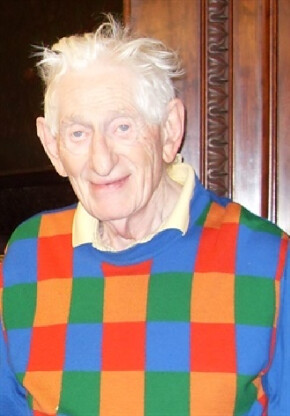Profile
Philip J. Davis

Philip J. Davis (b. 1923 in Lawrence, Mass., d. 2018) received an undergraduate degree in mathematics from Harvard College in 1943. During World War II he worked on problems in aerodynamics for the National Advisory Committee for Aeronautics (NACA) at Langley Airforce Base in Hampton, VA. He returned to Harvard after the war and completed a Ph.D. in mathematics in 1950 under the supervision of Ralph Boas.
Davis joined NBS in 1954 when it was becoming the leading center for an emerging field of mathematical research: numerical analysis. At that time John Todd was Chief of the Numerical Analysis Section of the Applied Mathematics Division and head of the Computation Laboratory that co-developed, with the NBS Electronic Computer Laboratory, the Standards Eastern Automatic Computer (SEAC), the first fully operational stored-program electronic digital computer in the United States. Davis joined the Section as part of a distinguished group of researchers studying mathematical methods for exploiting the new computational power. An interesting anecdote told by Davis reveals that he and mathematician Philip Rabinowitz were dubbed “Heroes of the SEAC” when their Gaussian integration code executed correctly on its first run.
In 1957, Davis took over as Chief, Numerical Analysis Section when John Todd and his wife Olga Taussky-Todd, feeling a strong pull toward teaching and research, left to pursue full-time positions at the California Institute of Technology. At CalTech, John Todd dedicated himself to the training of new researchers in numerical analysis, and Olga Taussky, who had been a full-time NBS consultant influential in establishing the field of matrix theory, became the first woman at CalTech to attain the academic rank of full professor.
Davis, easing into his role as Chief, did his part to promote the field of numerical analysis at NBS. He also had a big influence on the development of the NBS Handbook of Mathematical Functions with Formulas, Graphs, and Mathematical Tables (A&S), which became one of the most widely distributed and highly cited publications in NIST’s history. After being asked by Milton Abramowitz to work on the project, he chose to write the Chapter “Gamma Function and Related Functions.” Davis believed it was the first chapter written, and he laid out a schema that could serve as a model for the other chapters. Davis also co-authored a second Chapter, “Numerical Interpolation, Differentiation, and Integration” with Ivan Polonsky.
In 1961, Davis hired Frank W. J. Olver, a founding member of the Mathematics Division and Head of the Numerical Methods Section at the National Physical Laboratory, Teddington, U.K. Olver had been recruited to write the Chapter “Bessel Functions of Integer Order” for A&S by Milton Abramowitz, who passed away suddenly in 1958. NBS mathematician Irene Stegun took over management of the A&S project which was already well on its way, and led the work to publication in 1964. Decades later, Olver became Editor-in-Chief and Mathematics Editor of the NIST Digital Library of Mathematical Functions (DLMF), a complete revision of A&S that was publicly released in 2010.
Davis left NBS in 1963 to become a faculty member in the Division of Applied Mathematics at Brown University, but during the early development of the DLMF, which started in 1998, he was invited back to give a talk and speak with DLMF project members about their plans. After receiving an overview of the project and watching a short demo that included a few preliminary colorful, but static, 3D graphs constructed for the first Chapter, “Airy and Related Functions”, written by Olver, Davis expressed the hope that designing a web-based resource would allow the team to incorporate interesting computer graphics, such as function surfaces that could be rotated and examined. This immediately led to discussions among some of the project members about what might be possible, and the discovery that some interactive graphics work had already been done for the NIST Matrix Market, a publicly available repository of test matrices for comparing the effectiveness of numerical linear algebra algorithms.
Davis’s comments about our uninspired graphs sparked the research and design of techniques for creating interactive 3D visualizations of function surfaces, which grew in sophistication as our knowledge and the technology for developing 3D graphics on the web advanced over the years. Today the DLMF contains close to 600 2D and 3D graphs and more than 200 interactive 3D visualizations. DLMF users can rotate, rescale, zoom and otherwise explore mathematical function surfaces. The surface color map can be changed from height-based to phase-based for complex valued functions, and density plots can be generated through strategic scaling. Moreover, a cutting plane feature allows users to track curves of intersection produced as a moving plane cuts through the function surface. So while there are no chapters of NIST’s DLMF written by him and no chapter authors that he hired, perhaps every visualization in the DLMF should be stamped “Influenced by Philip J. Davis.”
